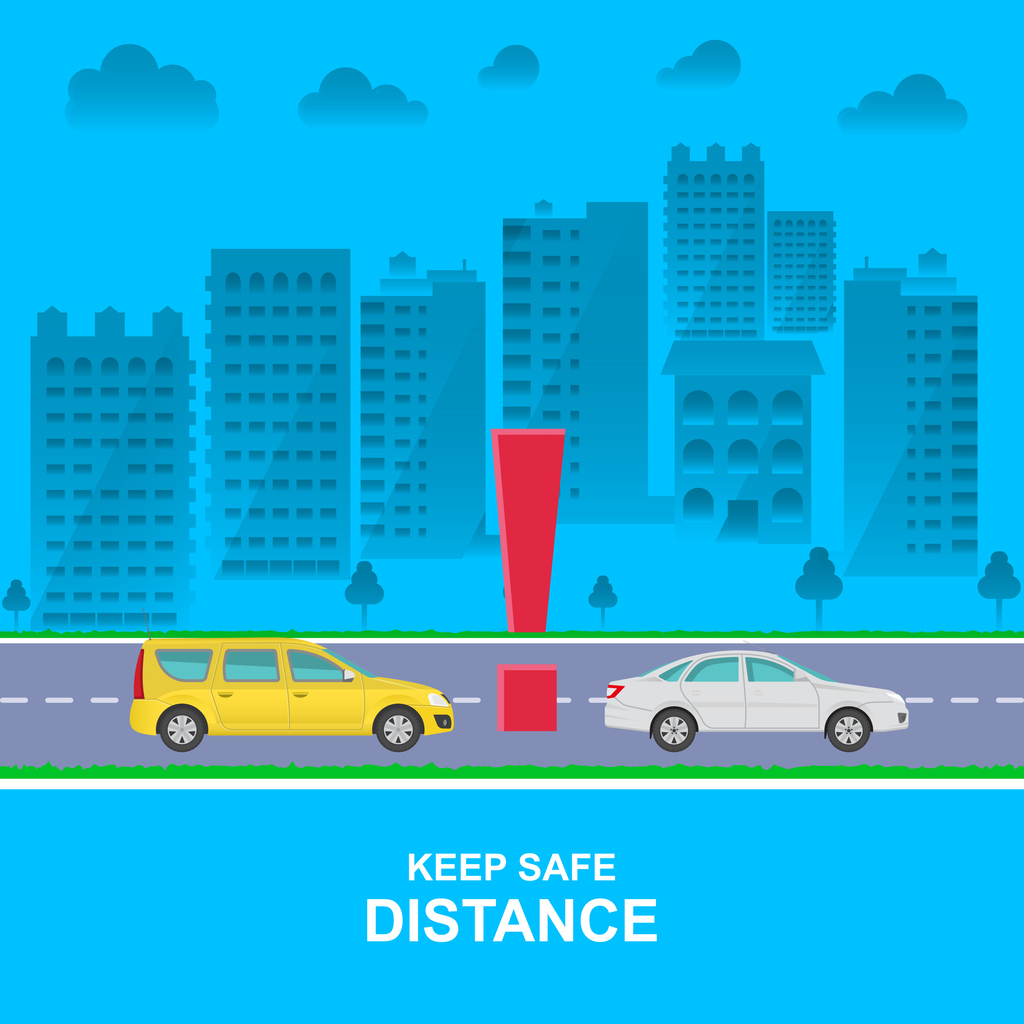Maintaining the driving at safe following distance is a fundamental practice for safe road use, helping to prevent collisions caused by sudden stops or unexpected hazards. The cornerstone of this practice is the easily remembered 3-second rule, a timing method that allows drivers to ensure enough space between vehicles for safe stopping and reaction. This guide provides a thorough explanation of how to calculate and implement driving at safe following distance effectively, ensuring safer driving conditions under various scenarios.
Understanding the Importance of Driving at Safe Following Distance Using the 3-Second Rule
Safe following distance is directly related to driving safety. When you maintain an adequate gap, you provide yourself time to react and stop if the vehicle ahead suddenly brakes or encounters an obstacle. The 3-second rule is a practical method where you choose a stationary object on the roadside, such as a sign or tree, and when the car ahead passes that object, you count the seconds before your vehicle passes the same point. If it takes less than three seconds, the distance is too close.
Maintaining this time-based gap helps accommodate reaction times, vehicle braking distances, and road conditions, ultimately reducing crash risks related to tailgating. This rule applies universally across different speeds and road types, making it reliable for all drivers learning driving at safe following distance techniques. It aids not just in everyday traffic but in demanding driving situations too driving at safe following distance details here and source insights are crucial to this topic.

Calculating Driving at Safe Following Distance for Different Speeds and Conditions
Calculating safe following distance involves understanding your speed and adjusting the 3-second rule accordingly. While the rule sets a three-second gap as a baseline, increased speed or adverse conditions necessitate longer distances. For instance, higher speeds mean your vehicle covers more ground per second, demanding an extended time gap to stop safely.
In wet, icy, or foggy weather, visibility decreases and road traction drops, making braking less effective and reaction times longer. Drivers must increase the gap beyond the standard 3 seconds to compensate. Nighttime driving also warrants a longer following distance due to reduced visibility and potential distractions caused by headlights.
By internalizing these conditions within the framework of driving at safe following distance, drivers can adjust their behavior proactively, ensuring safer travel. The 3-second rule in driving at safe following distance is thus a flexible standard adapted to varying traffic and environmental factors.
Why Increase the Following Distance Behind Large Vehicles?
Driving behind larger vehicles such as trucks or buses demands additional caution. These vehicles have larger blind spots where the driver may not see vehicles directly behind them. If you maintain only the basic 3-second space, you risk not being visible to the driver and may be unable to stop in time if the large vehicle brakes suddenly.
Large vehicles generally require more distance to decelerate due to their weight, meaning they feed into your necessary following distance. Increasing your gap beyond the 3-second rule enhances your ability to anticipate actions and avoid rear-end collisions or underride damages, critical safety considerations included in driving at safe following distance guidelines.

Toronto, Canada – November 11, 2014: A view of traffic on the Gardiner Express at rush hour. Many vehicles can be seen in the image.
Legal and Safety Standards for Driving at Safe Following Distance
Legal standards emphasize maintaining safe following distances to prevent collisions. Tailgating, or following too closely, is often listed as a traffic violation and can significantly impact liability in accidents. Laws and regulations set forth minimum following distances, and courts may consider adherence to rules like the 3-second rule as a factor in accident cases.
According to government safety guidelines such as those provided by the Federal Motor Carrier Safety Administration (FMCSA), drivers should increase following distances under adverse conditions and for large vehicles, reflecting principles embedded in the driving at safe following distance practice. These legal frameworks reinforce the need for conscious calculation of following distances, which aligns with best driving behaviors.
Practical Steps to Measure and Maintain Driving at Safe Following Distance on the Road
Drivers can practically apply the 3-second rule to calculate and maintain the safe following distance actively. First, identify a fixed point on the roadside. As the vehicle ahead passes it, start counting slowly — “one thousand one, one thousand two, one thousand three.” When you pass the point before reaching three seconds, reduce your speed to increase the gap.
Modern technologies such as adaptive cruise control also incorporate distance-keeping algorithms based on similar time-gap principles, demonstrating the broad acceptance and application of these distance-calculating methods. Learning manual control of following distance remains crucial for safety in all driving environments.
Situations Requiring Longer Following Distances Than the Standard 3 Seconds
Certain situations extend beyond the standard 3-second measurement for following distance. Poor weather conditions (rain, snow, fog) necessitate longer gaps to account for slower braking and reduced visibility. Night driving calls for increased distance due to glare and diminished peripheral vision.
Also, heavy traffic conditions may require drivers to maintain more space to accommodate sudden stops. When following motorcycles or cyclists, extra precaution ensures their safety too. Thus, understanding when to increase your distance is vital for mastering driving at safe following distance responsibly.
Consequences of Neglecting Safe Following Distance Rules
Failing to maintain sufficient following distance is a leading cause of rear-end collisions. Accidents caused by tailgating can lead to serious injuries, fatalities, and costly legal battles. Insurance claims related to following distance often consider fault based on whether the driver adhered to safety guidelines like the 3-second rule.
Legal precedents frequently cite failure to keep a safe following distance as negligence resulting in liability. This underscores the importance of educating drivers on calculating and implementing the appropriate gap for safe driving.

Enhancing Your Driving Safety Through Consistent Following Distance Calculation
To foster a culture of safer driving, consistent application of the safe following distance rule is critical. Include this calculation as a habitual step when driving to reduce risk exposure. Train yourself to regularly scan traffic conditions and adapt your following distance accordingly.
Such diligence reflects responsible driving that benefits individual safety and broader traffic safety outcomes. Mastering driving at safe following distance ensures you minimize accident risks and comply with legal expectations, supporting safer roads for everyone.
Summary: Mastering the 3-Second Rule for Driving at Safe Following Distance
Mastering driving at safe following distance through the 3-second rule is an achievable and essential skill for all drivers. By understanding how to calculate this distance, adjusting for conditions, and recognizing legal implications, you adopt safer driving habits that protect lives and reduce accident liability.
The simplicity of the 3-second method makes it accessible, yet its impact on road safety is profound. Drivers who practice this rule with discipline contribute to a safer driving environment for themselves and others on the road.
For detailed insight on when to increase your safe following distances, visit this resource on driving at safe following distance: When Should a Driver Increase the Safe Following Distance?.
For further government safety standards related to following distances and commercial vehicle driving regulations, consult resources such as the Federal Motor Carrier Safety Administration which offer regulatory guidance essential to comprehensive driving safety practices.